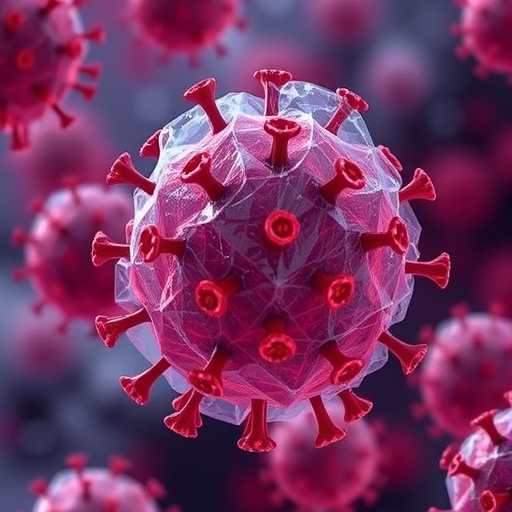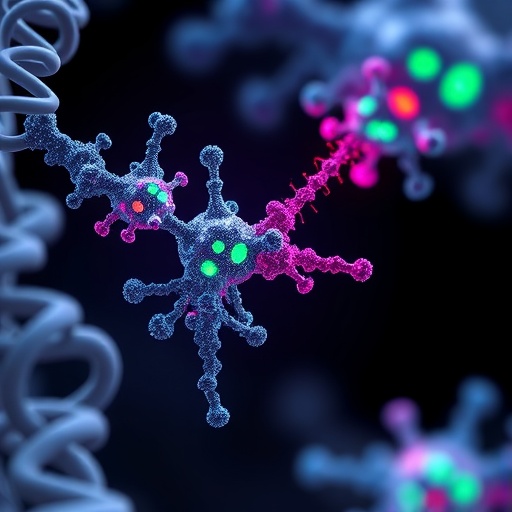In a groundbreaking study recently published in Nature Communications, researchers have unveiled how germline pathogenic variations significantly influence somatic alterations and clinical outcomes in pediatric central nervous system (CNS) tumors. This comprehensive investigation sheds new light on the intricate interplay between inherited genetic mutations and the genetic landscape of tumors, offering promising avenues for personalized medicine in one of the most challenging pediatric malignancies.
Pediatric CNS tumors represent a diverse and formidable group of cancers, often responsible for high morbidity and mortality rates in children worldwide. Despite advances in treatment, prognostic outcomes can vary widely, and the underlying genetic factors that dictate tumor behavior and patient survival remain poorly understood. This latest research pinpoints the germline genetic variations, inherited and present in all cells of the body, as a critical factor not only in tumorigenesis but also in shaping the somatic mutations that arise within tumor cells.
Previous studies predominantly focused on somatic mutations—those acquired during an individual’s lifetime within tumor cells—ignoring the broader context in which these mutations develop. Corbett and colleagues challenge this paradigm by systematically analyzing germline pathogenic variants alongside somatic alterations in a large cohort of pediatric CNS tumor patients. This dual-genome approach allowed the team to establish that the germline mutational landscape exerts a profound influence on the tumor’s genetic evolution and, consequently, on clinical outcomes.
Diving into the methodology, the study employed cutting-edge genomic sequencing technologies to profile both germline DNA (obtained from non-tumor tissue) and tumor DNA from hundreds of patient samples. This comprehensive dataset was subjected to rigorous bioinformatic analysis, distinguishing pathogenic germline variants from benign polymorphisms and correlating them with the nature and burden of somatic mutations. The findings reveal that children harboring specific germline pathogenic variants exhibit distinct somatic mutation profiles, often characterized by increased genomic instability and aggressive tumor features.
One of the pivotal discoveries of this study pertains to the identification of particular germline variants linked to mutations in key oncogenes and tumor suppressor genes frequently altered in pediatric CNS tumors. For instance, inherited mutations in DNA repair genes were associated with a higher frequency of somatic mutations and chromosomal aberrations, suggesting a compromised ability to maintain genomic integrity. This mechanism underlies not only tumor initiation but also progression, making germline guardians of genome stability a central axis in pediatric CNS cancer biology.
Notably, the researchers also demonstrated that the presence of germline pathogenic variants could serve as a stratification tool for predicting patient outcomes. The data robustly indicate that harboring such variants correlates with poorer survival rates and increased risk of tumor recurrence. This prognostic insight paves the way for genetic risk modeling that integrates germline and somatic information, potentially guiding clinical decisions such as treatment intensity and surveillance strategies.
The implications of incorporating germline pathogenic variation into diagnostic frameworks are profound. Currently, germline testing is not routinely performed for pediatric CNS tumor patients outside of select clinical contexts. This study advocates for broader implementation of germline sequencing in conjunction with conventional tumor profiling to capture the comprehensive genetic portrait influencing disease behavior. By doing so, clinicians may uncover predispositions that inform not only patient management but also familial risk counseling.
Moreover, the study raises compelling questions about therapeutic targeting. Tumors arising in the context of germline mutations affecting DNA repair pathways might be uniquely vulnerable to agents exploiting these deficiencies, such as PARP inhibitors or other synthetic lethality-based treatments. This precision medicine approach could transform the therapeutic landscape, offering more effective and less toxic options tailored to the patient’s genetic milieu.
From a research perspective, these findings encourage a re-evaluation of experimental models used to understand pediatric CNS tumors. Models that incorporate germline variations reflective of the patient population may yield more accurate insights into tumor biology and treatment responses. Additionally, the identification of germline-somatic interactions opens new research avenues to decode the steps of tumor evolution and resistance mechanisms.
The study’s comprehensive dataset and analytical rigor set a new standard for future pediatric oncology research. Where previous analyses were hampered by limited sample sizes or incomplete genomic integration, this work capitalizes on advancements in sequencing and computational biology to provide a panoramic view of oncogenesis in the pediatric brain. Such datasets will be invaluable resources for the global scientific community aiming to conquer these devastating diseases.
Furthermore, the multidisciplinary collaboration embedded in this research—from clinical oncology to genetics and computational biology—underscores the increasingly integrative nature of modern cancer research. The holistic outlook adopted here exemplifies how harmonizing diverse expertise can lead to transformative insights and ultimately benefit patient care.
In conclusion, Corbett et al.’s landmark study elucidates the critical role of germline pathogenic variation in shaping the somatic genetic landscape and influencing clinical outcomes in pediatric CNS tumors. This paradigm-shifting understanding compels the oncology community to embrace integrated genomic analyses as a standard of care, laying the groundwork for personalized interventions that could dramatically improve survival and quality of life for affected children. As the field progresses, harnessing these genetic insights will be pivotal to unravel the complexities of CNS tumor biology and to deliver on the promise of precision oncology.
—
Subject of Research: The impact of germline pathogenic variation on somatic genetic alterations and clinical outcomes in pediatric central nervous system tumors.
Article Title: Germline pathogenic variation impacts somatic alterations and patient outcomes in pediatric central nervous system tumors.
Article References:
Corbett, R.J., Kaufman, R.S., McQuaid, S.W. et al. Germline pathogenic variation impacts somatic alterations and patient outcomes in pediatric central nervous system tumors. Nat Commun 16, 10282 (2025). https://doi.org/10.1038/s41467-025-65190-4
Image Credits: AI Generated
DOI: https://doi.org/10.1038/s41467-025-65190-4
Tags: central nervous system tumor prognosisclinical outcomes in pediatric malignanciesdual-genome analysis in oncologygenetic factors influencing tumor outcomesgenetic landscape of pediatric tumorsgermline mutations in pediatric brain tumorshigh morbidity and mortality in childhood cancerinherited genetic mutations in childrenpediatric cancer research advancementspersonalized medicine for brain tumorssomatic alterations in CNS tumorsunderstanding pediatric CNS tumor behavior





